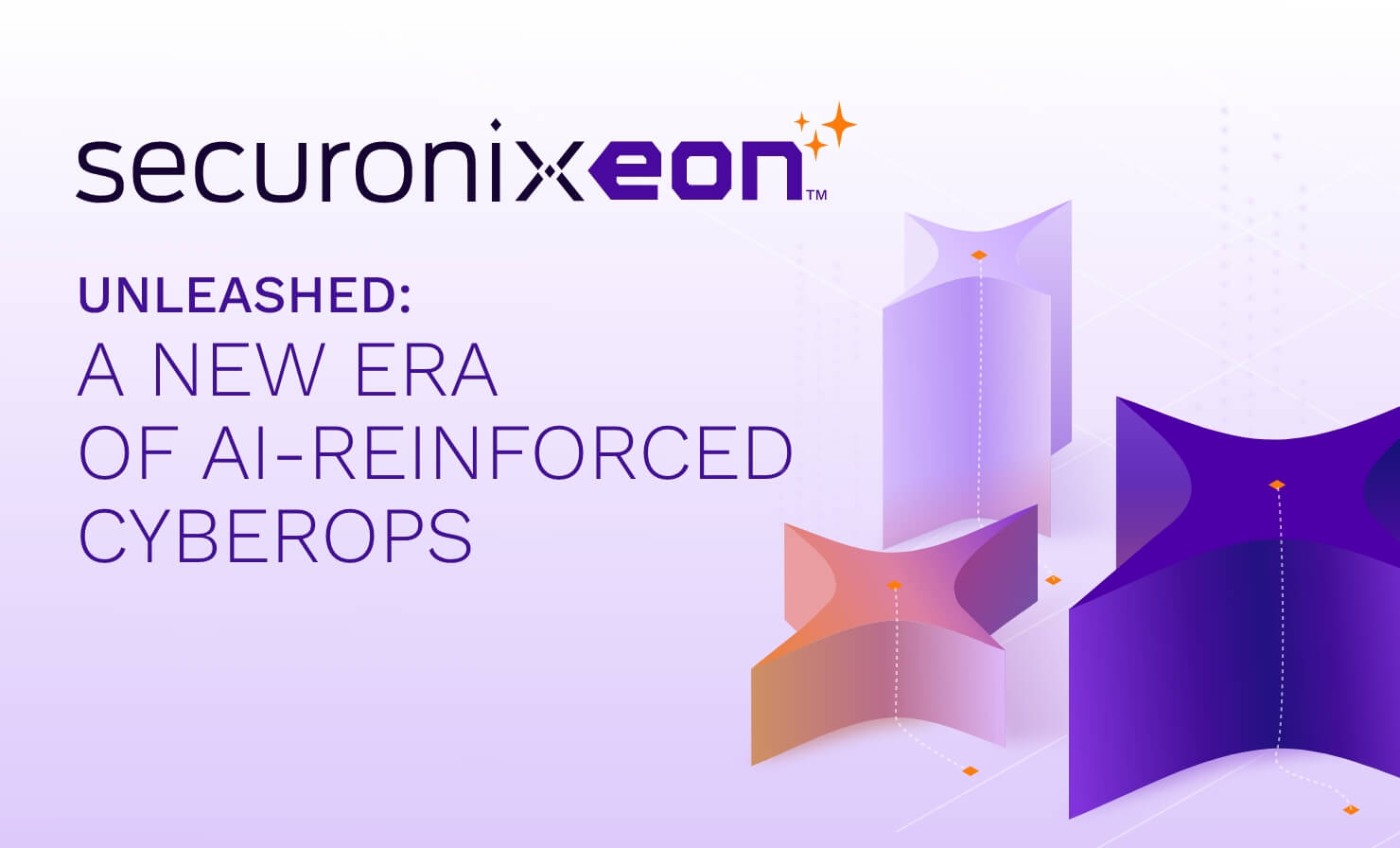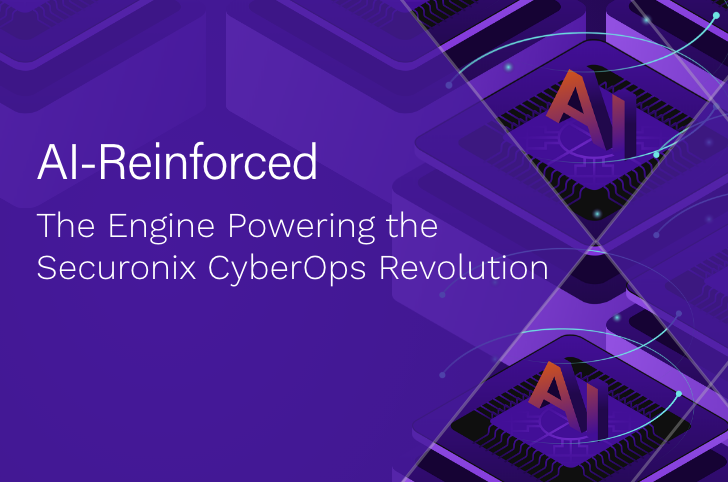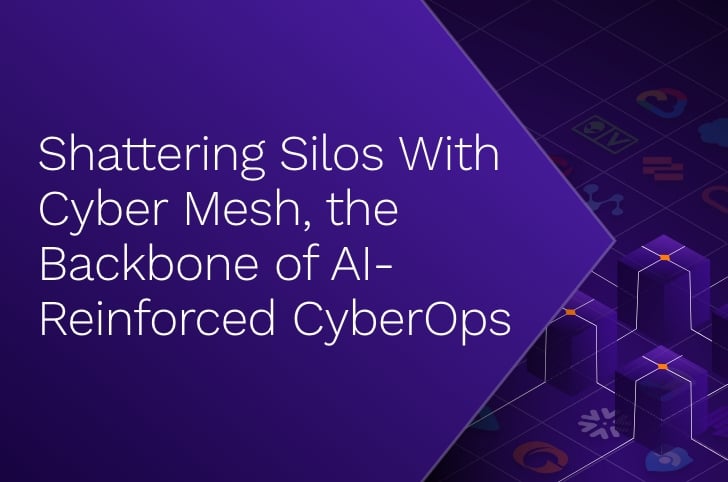- Why Securonix?
- Products
-
- Overview
- 'Bring Your Own' Deployment Models
-
- Products
-
- Solutions
-
- Monitoring the Cloud
- Cloud Security Monitoring
- Gain visibility to detect and respond to cloud threats.
- Amazon Web Services
- Achieve faster response to threats across AWS.
- Google Cloud Platform
- Improve detection and response across GCP.
- Microsoft Azure
- Expand security monitoring across Azure services.
- Microsoft 365
- Benefit from detection and response on Office 365.
-
- Featured Use Case
- Insider Threat
- Monitor and mitigate malicious and negligent users.
- NDR
- Analyze network events to detect and respond to advanced threats.
- EMR Monitoring
- Increase patient data privacy and prevent data snooping.
- MITRE ATT&CK
- Align alerts and analytics to the MITRE ATT&CK framework.
-
- Industries
- Financial Services
- Healthcare
-
- Resources
- Partners
- Company
- Blog
SIEM
Enterprise infrastructure environments are increasingly becoming more complex, oftentimes at the cost of their security staff’s efficiency and concomitantly organizational security. Selecting the right security information and event management (SIEM) solution is critical, especially now to facilitate security analysts’ ability to swiftly collect and analyze increasingly large volumes of data to quickly detect, investigate, and respond to threats.
What is SIEM?
Security practitioners often struggle to collect, organize, and parse through the ever-expanding volume of different types of organizational data from disparate sources, prioritize critical threats, and respond to and remediate them accordingly. SIEM solutions ingest data from various entities across an organization, normalize and enrich the data, identify and connect anomalous and potentially malicious events, facilitating threat detection, investigation and response (TDIR) efforts.
SIEMs reduce the burden on practitioners and enhance security measures by providing teams with a centralized platform to gather, consolidate, and analyze large amounts of data across the organization. They also offer features like dashboards that highlight and prioritize threat activity, incident management, and compliance reporting to ensure regulatory standards are met. Modern SIEM solutions also leverage AI to swiftly sift through all an organization’s telemetry, alert on potentially malicious and anomalous user actions, and automate response efforts, thereby streamlining and expediting security operations center teams’ threat detection and response efforts.
5 Key SIEM Vendor Capabilities To Look For:
Selecting the right SIEM security solution provider to partner with is critically important when it comes to successfully implementing a robust and sustainable CyberOps practice. Best-in-class SIEM solution providers should offer a minimum of the below 5 capabilities.
1. Log Collection and Management
SIEMs collect logs from various on-premises and cloud-based sources from within enterprise IT environments, ranging from cloud access security brokers (CASBs), firewalls, end-user devices, applications, web proxies, data loss prevention (DLP) solutions and more.
Security operations teams must efficiently comb through this data to detect, investigate, and respond to a wide range of malicious activities that span from nation state-sponsored attacks to insider threats.
Given the bevy of threats targeting enterprises today, choosing a SEIM with strong log collection and management capabilities is crucial for security operations teams to continuously monitor and improve their organizations’ security postures.
SIEMs that offer highly expansive and flexible log collection capabilities via a scalable Data Lake also enable organizations to retain data for the long periods of time that are needed to satisfy various modern compliance requirements.
2. Real-Time Event Monitoring and Threat Detection
Best-in-class SIEM solutions should offer real-time event monitoring at the time of data ingestion to enhance threat detection speed and efficacy. A strong SIEM solution should examine data for threats and suspicious activity as it flows in via a layer of advanced machine learning algorithms and behavioral analytics to aid in expedient threat detection, investigation, and response.
This can be achieved via user and entity behavior analytics (UEBA), which enables teams to proactively monitor and react quickly to anomalous user and entity behaviors that are indicative of potential threats, such as unusual account privilege changes, data hoarding, and data exfiltration. Behavioral-based anomaly detection can automate the process of continuously monitoring all user and entity activities to establish a baseline of normal behavior.
This baseline, combined with non-signature-based advanced analytics – including behavioral modeling, machine learning algorithms, and threat intelligence – can then be used to identify anomalies and detect threats in real-time. SIEMs with real-time monitoring via UEBA capabilities can then assign risk scores based on different user behavioral patterns. This empowers security teams to quickly mitigate detected threats, by allowing them to quickly zero-in on suspicious users and systems, monitor them closely, and further investigate their behaviors.
3. Advanced Analytics and Enrichment
Another capability that security teams should look for in a SIEM solution is advanced analytics and enrichment. Leading SIEM solutions should offer out-of-the-box, real-time security event enrichment upon ingestion to convert unrefined raw data into curated intelligence to enhance threat hunting and detection.
This extensive, automated data enrichment can be augmented and enhanced even more with advanced machine learning algorithms and AI, allowing security teams to swiftly correlate abnormal combinations of violations that span across multiple events, thereby further improving the speed, precision, and effectiveness of threat detection, investigation, and response efforts.
SIEM solutions should not only correlate seemingly disparate events, but also map them to the MITRE ATT&CK framework to offer a comprehensive and granular view of active multi-stage threats in their environment, along with actionable insights. This effectively enhances detection and response efforts by reducing the overall number of alerts that analysts need to investigate and minimizing the effort needed for triaging alerts and conducting investigations.
This results in faster responses to potential threats, reduced manual work, and a more targeted approach to addressing actual security incidents, ultimately freeing up security teams’ time, so that they can focus on more strategic tasks.
4. Incident Response Management
Responding to incidents can be a daunting task for SecOps teams, requiring multi-pronged forensic investigations. These investigations involve comprehensively collecting and analyzing all logs and devices associated with the incident, identifying the users involved, and executing response activities, such as quarantining devices, network segmentation, and more.
Many of these tasks are repetitive and involve countless hours of manual labor, leaving SOC analysts drained. SIEMs should provide incident response management capabilities that weave response actions into analyst workflows and integrate seamlessly with multiple other security tools so they don’t have to swivel across multiple different security solutions or interfaces and so that all of the data that is needed to investigate and remediate an incident available on a single screen. SIEM solutions should also offer features that allow analysts to collaborate on incidents and escalate them to different tiers.
Having a well-defined incident response plan enables organizations to handle security breaches swiftly and effectively, minimizing potential damage. SIEMs with automated incident response management capabilities reduce the time to respond to threats thereby decreasing the potential impact of incidents. Additionally, they enhance the efficiency of forensic investigation and remediation efforts, alleviate strain on analysts, and allow them to do more with less and focus on other critical tasks.
5. Compliance Reporting and Auditing
As data security and privacy regulations become stricter, security compliance reporting is a highly relevant legal consideration for many organizations. SIEMs are critical for regulatory compliance reporting and auditing and should offer out of the box reports that help organizations remain compliant with common security frameworks and other regulatory requirements.
Organizations can avoid expensive regulatory fines, reduce data breach risk, and demonstrate their commitment to customer privacy and security by adhering to industry standards and regulations, by supporting commonly compliance requirements such as NIST 800-53, GDPR, HIPAA, ISO 27001, PCI DSS, SOX, NERC, FISMA, and High Trust Reporting Templates. Modern SIEM solutions should offer dashboards and custom reporting capabilities that address the above compliance requirements to simplify reporting and audits, while also signaling organizational integrity and trust to both customers and internal stakeholders.
Additionally, regulatory requirements require organizations to retain data for a period of time for reporting purposes. As such, SIEM solutions must also provide cost-effective and fast data storage and search capabilities to meet data retention requirements, with best-in-class SIEMs offering up to a year’s worth of “hot” – or readily available and searchable – data to also offer visibility into events leading up to security incidents that played out over the course of many months.
Practical Examples Of SIEM At Work
Below are some real-world examples that illustrate how Securonix’s AI-Reinforced SIEM is currently being used across different industries:
- Healthcare: Securonix upgraded Alberta Health Services from their outdated on-premises legacy SIEM solution deployment to our cloud native solution, effectively providing them with more value in the first six months than they had experienced in the prior eight years. By transitioning to our solution, they reclaimed three man-hours per day previously spent on managing infrastructure. Additionally, they gained deeper insight into user behavior, discovering that their night staff were ten times more likely to click on phishing links.
- IT Services & Consulting: Securonix recently implemented our SIEM solution for Persistent Systems, transitioning them from their previous on-premises setup. With our best-in-class SIEM, they achieved complete coverage of their environment, encompassing both on-premises infrastructure and multiple cloud providers. They also utilized several of our pre-built SOAR playbooks, effectively leveraging automation and integrating their pre-existing threat intelligence feeds.
- Telecom: One of the major telecom providers in the US was facing call forwarding fraud linked to insider threats. By implementing Securonix’s AI-Reinforced SIEM solution, they significantly reduced the privileges of their call center agents, leading to a notable decrease in fraud. They are also deploying geolocation-based policies to enhance their fraud detection capabilities even further.
Choosing the right SIEM
Selecting the right SIEM solution is critical for building a robust and sustainable SecOps program. A top-tier SIEM provider should offer at least five key capabilities: comprehensive log collection and management for effective threat detection and compliance; advanced analytics that leverage AI for precise and efficient threat detection and response; real-time event monitoring with advanced machine learning and behavioral analytics to identify and respond to threats quickly; automated incident response management to minimize the impact of breaches and reduce analyst workload; and compliance reporting and auditing tools to ensure adherence to regulatory standards.
These capabilities are essential for maintaining strong security postures, improving operational efficiency, and reducing the strain on security teams. Furthermore, SIEMs should provide all of these functions of SIEM, UEBA, SOAR, and a Data Lake in a single platform with a unified interface to further enhance the effectiveness of threat detection, investigation, and response efforts.
Securonix provides exceptional cyber risk reduction through rapid, efficient and high-fidelity, threat detection, investigation, and response. Its unified SIEM platform leverages advanced AI and analytics to streamline operations. It also supports multi-cloud environments and seamlessly integrates with other pre-existing security solutions. Securonix enhances operational efficiency while delivering a coherent experience for security teams.
To learn more about Securonix Unified Defense SIEM, click here, visit securonix.com, or book a demo today.






